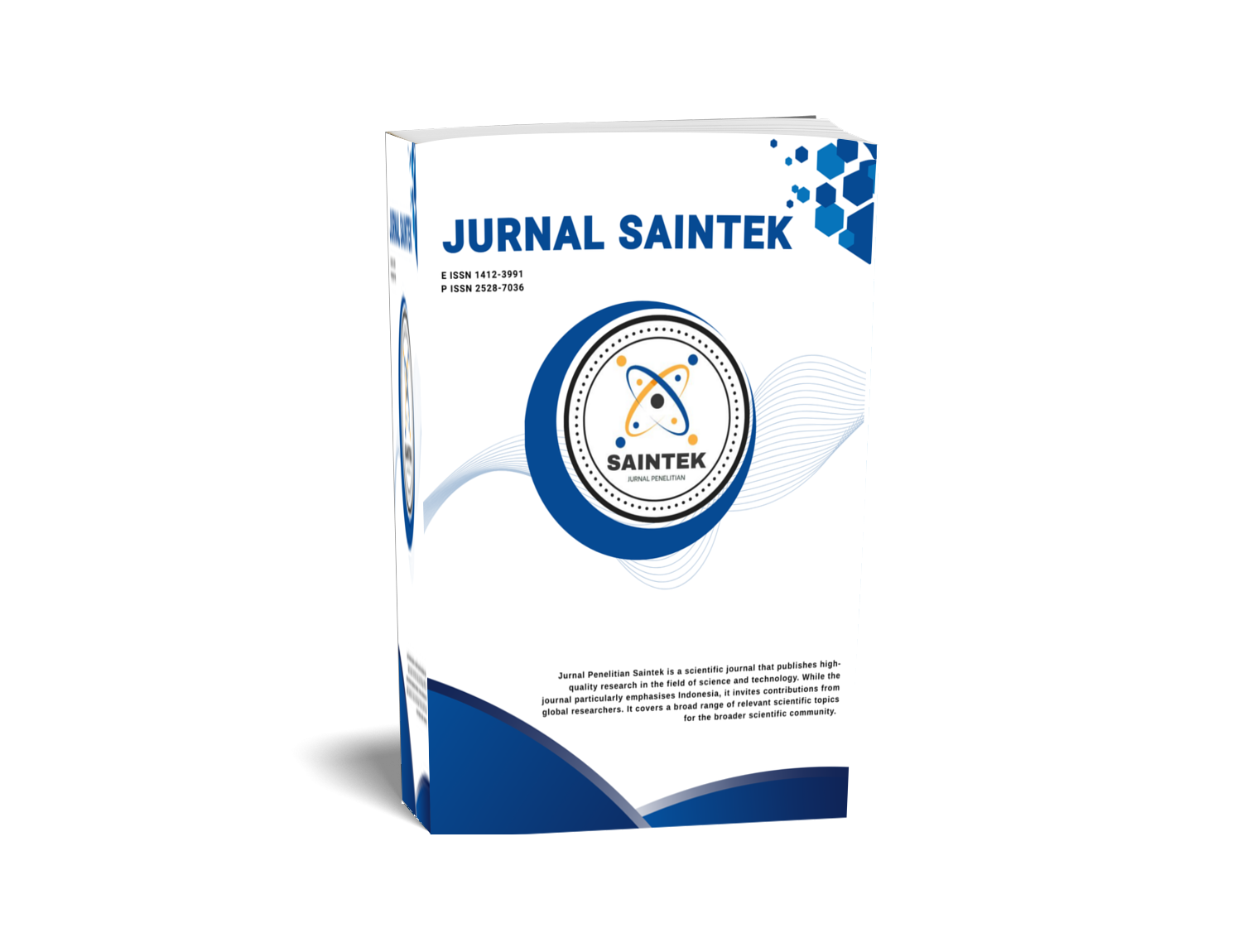THE RELATIONSHIP AMONG PEDICULOSIS CAPITIS, ANEMIA AND LEARNING ACHIEVEMENT IN ELEMENTARY STUDENTS
DOI:
https://doi.org/10.21831/jps.v24i2.26500Keywords:
Capitalist pediculus, anemia status, learning achievementAbstract
This study was aimed at determining the relationship between the Pediculus humanus capitis infestation condition, anemia status and learning achievement in primary school-age children. This study was conducted at SD Bangunharjo Sewon Bantul, Yogyakarta. This study is an observational analytic study with cross sectional design in which the variables are measured in one measurement without intervening. The data obtained through pediculosis examination, Hb examination, and measurement of learning outcomes. The data then were analyzed descriptively presented in tabular form, then performed statistical analysis using the chi-square test. The results show that the students suffering from pediculosis, 57.9% also suffering from anemia and 51.0% having poor category achievement. In line with other researchers, one of the factors that influence one's learning achievement is the memory factor. Someone's anemia status can affect one's memory. The prevalence of Pediculus humanus capitis infestation is 38.3%. Chi-square test showed a significant relationship between Pediculus humanus capitis infestation condition, anemia status, and learning achievement.
HUBUNGAN PEDIKULOSIS KAPITIS, STATUS ANEMIA DAN PRESTASI BELAJAR PADA SISWA SEKOLAH DASAR
Penelitian ini bertujuan untuk mengetahui hubungan kejadian infestasi Pediculus humanus capitis (kutu kepala) dengan status anemia dan prestasi belajar pada anak usia sekolah dasar. Penelitian ini dilakukan di SD wilayah Bangunharjo Sewon Bantul Yogyakarta. Penelitian ini merupakan penelitian analitik observasional dengan desain cross sectional. Variabel diukur dalam satu kali pengukuran dengan tidak melakukan intervensi. Data penelitian diperoleh melalui pemeriksaan pedikulosis, pemeriksaan Hb, dan pengukuran hasil belajar. Data dianalisa secara deskriptif yang disajikan dalam bentuk tabel, kemudian dilakukan analisis statistik menggunakan Uji chi-square. Hasil penelitian ini menunjukan bahwa menderita pedikulosis sebesar 57,9% menderita anemia dan sebesar 51,0% dengan prestasi belajar kategori kurang baik. Salah satu faktor yang mempengaruhi prestasi belajar seseorang yaitu faktor daya ingat. Status anemia seseorang dapat mempengaruhi daya ingat seseorang. Prevalensi infestasi Pediculus humanus capitis sebesar 38,3%. Uji chi-square menunjukkan adanya hubungan yang signifikan antara kejadian infestasi Pediculus humanus capitis dengan status anemia dan prestasi belajar.
References
Azni, S. M.(2014). Prevalence of head lice at the primary school in Damghan Iran. Zahedan J Res Med Sci., 16(11), 47-49.
Bugayong, A. M. S., Araneta, K. T. S., Cabanilla, J. C., Gayatgay, C. E. U., Nufuar, E. J. T., Rufino, K. H. S., ... & Padilla, P. I. (2011). Effect of dry-on, suffocation-based treatment on the prevalence of pediculosis among schoolchildren in Calagtangan Village, Miag-ao, Iloilo. Philippine Science Letters, 4(1), 33-7.
Cohen, B. A. (2013). Meeting the clinical and psychosocial challenges of head lice. Monthly Prescribing Reference, 12(7), 1-15.
Djamarah, S. B. (2012). Prestasi belajar dan kompetensi guru. Surabaya: Usaha Nasional.
Guenther, L. C. C. (2015). Pediculosic and Pthiriasis (Lice infestation). Diunduh dari https://emedicine.medscape.com/article/225013-clinical.
Guss, D. A., Koenig, M., & Castillo, E. M. (2011). Severe iron deficiency anemia and lice infestation. The Journal of emergency medicine, 41(4), 362-365. Diunduh darihttps://www.ncbi.nlm.nih.gov/pubmed/20656443.
Hadidjaja, P., & Margono, S. S. (2011). Dasar parasitologi klinik. Jakarta: Badan Penerbit Fakultas Kedokteran Universitas Indonesia.
Moradi, A. R., Zahirnia, A. H., Alipour, A. M., & Eskandari, Z. (2009) The prevalence of pediculosis capitis in primary school students in Bahar, Hamadan Province, Iran. J Res Health Sci. 9(1), 45-9.
Munusamy, H., Murhandarwati, E. E. H., & Umniyati, S. R. (2014). The relationship between the prevalence of head lice infestation with hygiene and knowledge among the rural school children in Yogyakarta. Tropical Medicine Journal, 1(2), 102-109.
Nindia, Y. (2016) Prevalensi infestasi kutu kepala (pediculus humanus capitis) dan faktor risiko penularannya pada anak sekolah dasar di Kota Sabang Provinsi Aceh (Tesis tidak diterbitkan). Program Pascasarjana Institut Pertanian Bogor, Bogor.
Nirmala, D. (2012). Gizi anak sekolah. Jakarta: Kompas.
Rassami, W., & Soonwera, M. (2012). Epidemiology of pediculosis capitis among schoolchildren in the eastern area of Bangkok, Thailand. Asian Pacific journal of Tropical Biomedicine, 2(11), 901-904.
Sanford, C., Jong, E., & Pottinger, P. (2016). The travel and tropical medical manual (5th ed.). USA: Saunders Elseiver.
Soedarto. (2011). Buku ajar parasitologi kedokteran. Jakarta: Sagung Seto.
Tanjung, M. F. C., & Sekartini, R. (2004). Masalah tidur pada anak. Sari Pediatri Anak, 6(3), 138-142.
WHO. (2001). Iron deficiency anaemia: Assessment, prevention, and control, a guide for programme managers. Geneva: WHO.
Yousefi, S., Shamsipoor, F., & Abadi, Y. S. (2012). Epidemiological study of head louse (Pediculus humanus capitis) infestation among primary school students in rural areas of Sirjan County, South of Iran. Thrita, 1(2), 53-56.
Zhen, A. J. L. Y., Murhandarwati, E. E. H., & Umniyati, S. R. (2009). Head lice infestation and its relationship with hygiene and knowledge among urban school children in Yogyakarta. Tropical Medicine Journal, 1(1), 35-41.
Zulinda, A., Yolazenia, & Zahtamal. (2017). Faktor-Faktor yang mempengaruhi kejadian pedikulosis kapitis pada murid kelas III, IV, V Dan VI SDN 019 Tebing Tinggi Okura Kecamatan Rumbai Pesisir Pekanbaru. Jurnal Ilmu Kedokteran, 4(1), 65-69.
Downloads
Published
How to Cite
Issue
Section
Citation Check
License
Who Can Submit?
Any individual may submit an original manuscript for consideration for publication in Jurnal Penelitian Saintek as long as they hold the copyright to the work or are authorized by the copyright owner(s) to submit it. Authors retain initial ownership of the copyrights to their works prior to publication, except in cases where, as a condition of employment, they have agreed to transfer copyright to their employer.
User Rights
Jurnal Penelitian Saintek is an Open Access journal. Users are granted the right to read, download, copy, distribute, print, search, or link to the full texts of articles, provided they comply with the conditions of the Creative Commons Attribution-ShareAlike License 4.0 (CC BY-SA 4.0).
https://creativecommons.org/licenses/by-sa/4.0/
Author Rights
Authors retains copyrights.
Jurnal Penelitian Saintek by http://journal.uny.ac.id/index.php/saintek is licensed under a Creative Commons Attribution-ShareAlike 4.0 International License.









